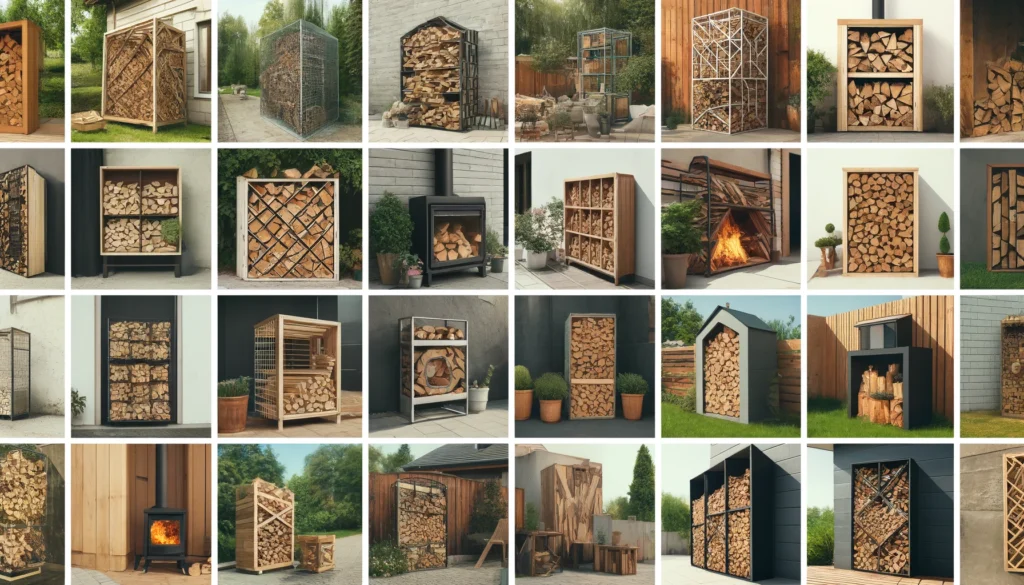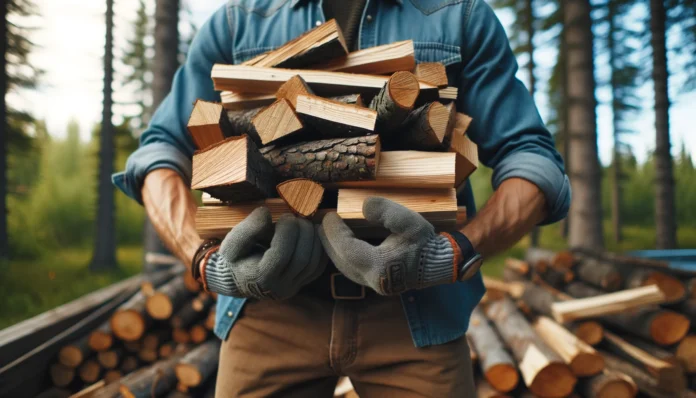Proper firewood storage is essential for ensuring a crackling fire, efficient burning, and preventing pest infestations. Storing firewood outdoors offers the added benefit of natural seasoning, which is crucial for achieving optimal dryness and maximizing heat output. This guide will walk you through the best practices for storing firewood outside, covering everything from choosing the right location to protecting your wood from the elements and pests.
Choosing the Ideal Location for Your Firewood
The location of your firewood storage plays a significant role in its seasoning process and overall quality. Consider the following factors:
- Sunlight and Airflow: Ample sunlight and good airflow are essential for drying out firewood and preventing mold growth. Choose a spot that receives at least 6 hours of direct sunlight per day and has good air circulation.
- Elevation: Elevate your firewood off the ground using pallets, racks, or concrete blocks. This prevents moisture absorption from the soil and deters pests like termites and beetles.
- Protection from the Elements: While sunlight and airflow are important, you also need to protect your firewood from rain and snow. Consider using a firewood rack with a roof, a tarp, or a dedicated firewood shed.
Firewood Storage Solutions: Racks, Sheds, and Covers

[Image collage showcasing different firewood storage solutions]
There are various options for storing firewood outdoors, each with its own advantages:
- Firewood Racks: Firewood racks come in various materials like metal, wood, or even DIY options. They provide excellent airflow and elevation, making them ideal for smaller quantities of wood.
- Firewood Sheds: If you have a larger supply of firewood, a dedicated shed offers the best protection from the elements. It also keeps your wood organized and easily accessible.
- Firewood Covers: Tarps and covers are a budget-friendly option for protecting firewood from rain and snow. However, ensure adequate airflow to prevent moisture buildup.
The Art of Seasoning Firewood
Seasoning is the process of drying out firewood to reduce its moisture content. Seasoned firewood burns more efficiently, produces less smoke, and is less likely to harbor pests. Here’s what you need to know:
- What is Seasoning?: Seasoning involves stacking firewood in a way that allows air to circulate around each piece, gradually reducing its moisture content over time.
- Ideal Seasoning Conditions: The ideal seasoning time varies depending on the type of wood and climate, but most hardwoods require 6-12 months to season properly.
- Testing for Seasoned Firewood: Seasoned firewood typically has cracks in the ends, feels lighter, and makes a hollow sound when knocked together. You can also use a moisture meter to measure the moisture content accurately.
Keeping Pests at Bay
Firewood can attract various pests, including termites, beetles, and ants. Here’s how to prevent infestations:
- Proper Storage: Elevate your firewood off the ground, keep it dry, and avoid stacking it directly against structures.
- Inspect Regularly: Check your firewood regularly for signs of pests, such as holes, sawdust, or insect activity.
- Insecticides: If you notice a pest problem, consider using insecticides specifically designed for firewood.
Safety First: Firewood Storage Precautions

safe firewood storage setup away from structures : https://www.amazon.com/SnugNiture-Firewood-Storage-Fireplace-Adjustable/dp/B08F58Q3P9
Always prioritize safety when storing firewood:
- Fire Hazards: Store firewood at least 30 feet away from structures, including your home, garage, and shed.
- Stacking Safety: Stack firewood securely to prevent it from collapsing and causing injuries. Avoid stacking it too high.
Additional Tips for Optimal Firewood Storage
- Rotate Your Firewood: Use the oldest firewood first (FIFO) to prevent it from becoming too old and deteriorating.
- Prepare for Winter: Ensure you have enough seasoned firewood before the winter months to keep your home warm and cozy.
By following these guidelines, you can ensure that your firewood is properly seasoned, protected, and ready to provide you with a warm and enjoyable fire all year round.
Additional Resources:
- [Link to a DIY firewood rack plan]
- [Link to a firewood moisture meter]
- [Link to a guide on identifying firewood pests]
Remember, proper firewood storage is an investment in the quality of your fires and the longevity of your wood supply. With a little effort and attention to detail, you can enjoy the benefits of a well-maintained firewood stockpile for years to come.



